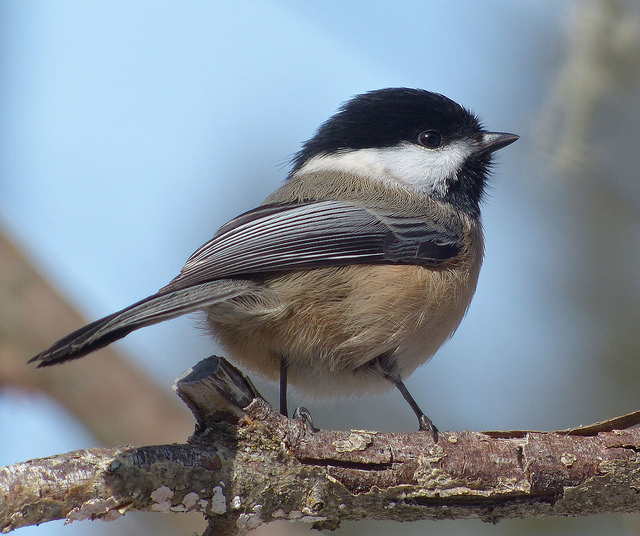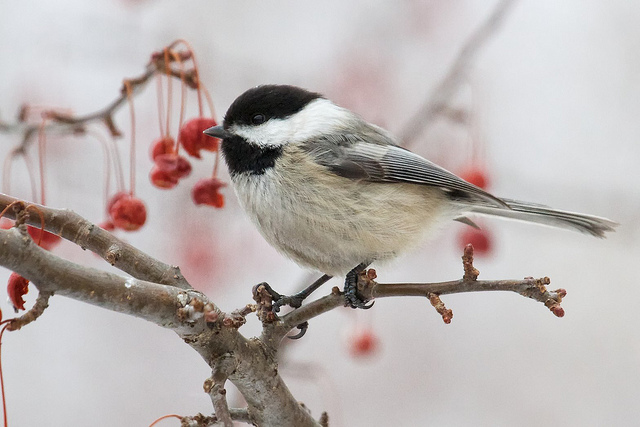Black-capped chickadee; photo by eugene beckes on Flickr (noncommercial use permitted with attribution / share alike).
Official State Bird of Massachusetts
The black-capped chickadee (Poecile atricapillus) was designated the state bird of Massachusetts in 1941 The black-capped chickadee is also the state bird of Maine. Massachusetts also recognizes an official state game bird. All State Birds
A minuscule, cheerfully sociable bird, the energetic black-capped chickadee does not migrate - so we can enjoy them all year long! The black-capped chickadee is a member of the titmouse family (also known as the titmouse, tomtit, and the dickybird). The unique call of the chickadee is one of the most complex in the animal kingdom - very slight variations in the "chick-a-dee" can act as an alarm call, a contact call, or can be used to relay information when they recognize another flock.
A common backyard bird, black-capped chickadees inhabit the northern two-thirds of the United States and much of Canada. They are found deep in the forests as well as suburban areas. The black-capped chickadee is omnivorous (eats both plants and animals). Caterpillars, spiders and other insects make up about half of their diet, with seeds and berries filling in the rest. The chickadee is known for "caching" food. They hide seeds and berries in crevices of tree bark and under leaves, and can remember where they have hidden their stored foods for up to a month!
The black-capped chickadee is monogamous and when a pair bonds, they remain together for life. The female builds their nest in abandoned woodpecker cavities or nesting boxes. Sometimes, the female will fashion her own cavity in a rotten tree trunk, not an easy task for a bird with such a tiny bill. The male feeds the female during the nest building and during the time she is brooding her clutch of six to eight eggs. When the babies hatch, both parents share the job of feeding them.


